PESTS AND DISEASES OF FORESTRY IN NEW ZEALAND
Some minor fungi of conifers
Scion is the leading provider of forest-related knowledge in New Zealand
Formerly known as the Forest Research Institute, Scion has been a leader in research relating to forest health for over 50 years. The Rotorua-based Crown Research Institute continues to provide science that will protect all forests from damage caused by insect pests, pathogens and weeds. The information presented below arises from these research activities.
(Allantophomopsis pseudotsugae, Phomopsis juniperivora, Rhizosphaera kalkhoffii and R. pini),
Forest Pathology in New Zealand No. 13.
Based on I.A. Hood and C.J. Sandberg (1985)
Causal Organisms
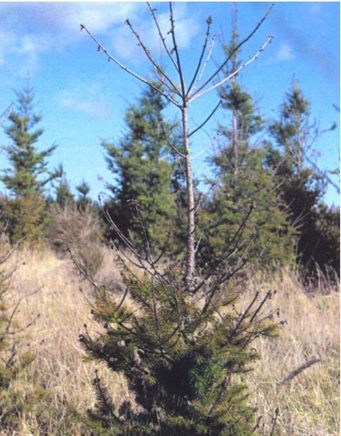
Fig. 1 - Young Douglas fir (Pseudotsuga menziesii) with frost damage, and dieback caused by Allantophomopsis pseudotsugae.
Allantophomopsis pseudotsugae
From Forest Pathology in New Zealand No. 13, Some minor fungi of conifers.
Based on I.A. Hood and C.J. Sandberg (1985)
Type of injury
Shoot dieback, stem girdling, and cankering in young trees following frost injury or wounding.
Diagnostic features
- Death of terminal or one or more lateral branches (Fig. 1, 2).
- Canker formation on living shoots (Fig. 3).
- Browning of foliage on diseased shoots.
- Numerous, small (less than 1 mm in diameter), black, spherical fruiting bodies partially emergent through bark on diseased shoots or present in dead needles.
- Diseased trees less than 10 years old.
- Diseased trees usually on frost-prone sites (frost hollows or flats, often typified by the presence of Dracophyllum subulatum in the central North Island).
Notes: It is difficult to separate symptoms of this disease from those caused by frost damage alone. Allantophomopsis pseudotsugae does, however, cause browning of tissues beneath the bark, and infection is not restricted to current shoot growth, whereas frost damage is frequently confined to current shoots which do not initially appear brown when bark is removed. Symptoms may also be confused with those of Diplodia pinea which causes similar damage.
Hosts
Cedrus brevifolia; Cupressus macrocarpa; Larix decidua; L. kaempferi; Pinus canariensis; P. contorta; P. muricata; P. nigra ssp. laricio; P. ponderosa; P. radiata; Pseudotsuga menziesii; Thuja plicata.
Distribution
Throughout New Zealand.
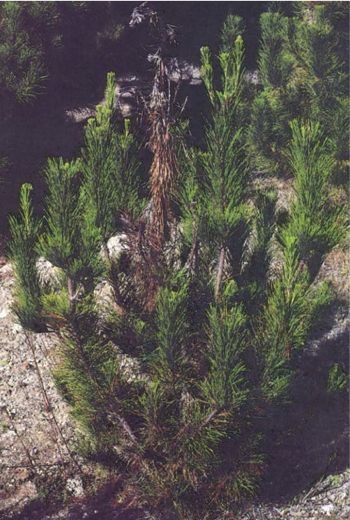
Fig. 2 - Branch dieback of young Pinus radiata caused by Allantophomopsis pseudotsugae following frost damage.
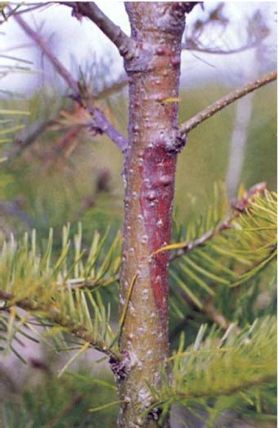
Fig. 3 - Canker in stem of Pseudotsuga menziesii induced by Allantophomopsis pseudotsugae.
Disease development
The fungus is commonly found on dead conifer branches and foliage, but can also be a wound parasite which invades living tissues after first colonising dead branches, frost-killed shoots, or frost-induced bark cracks. Infection by spores may occur either at shoot tips or lower in the stem. Growth within living tissue is limited, and infection in shoot tips does not normally grow down past the second or third internodes. Lower stem infection may lead to canker formation or, if girdling occurs, to wilting and death of the whole shoot.
Economic importance
Allantophomopsis pseudotsugae serves chiefly to aggravate the effects of frost damage and may adversely influence tree growth and form. It is not usually fatal, except on newly planted or weakened trees. This fungus caused some concern in the 1930s when plantations of exotic conifers were more commonly established in frost-prone localities and on sites at more than 600 m above sea level. Today the disease is of limited importance, occasionally appearing on sites exposed to heavy frost, particularly if windrowing has been carried out and if unsuitable planting stock is used. Allantophomopsis pseudotsugae may also damage nursery seedlings.
Control
No control is necessary beyond the usual precautions taken to avoid frost injury.
Phomopsis juniperivora
From Forest Pathology in New Zealand No. 13, Some minor fungi of conifers.
Based on I.A. Hood and C.J. Sandberg (1985)
Type of injury
Shoot death or cankering of nursery seedlings.
Diagnostic features
- Browning and death of one or more terminal or lateral shoots (Fig. 4).
- Localised canker formation on living shoots.
- Resin exudation from diseased tissues.
- Production of numerous, small (less than 1 mm in diameter), black, spherical, fruiting bodies breaking out through bark of diseased shoots.
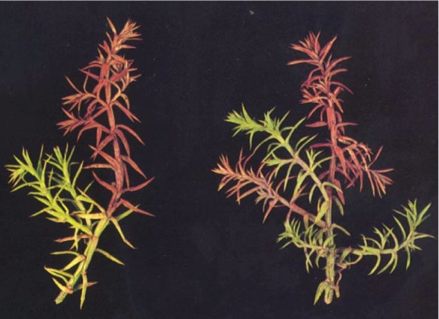
Fig. 4 - Shoot dieback on seedlings of Cupressus lusitanica caused by Phomopsis juniperivora.
Host
Cedrus atlantica; Chamaecyparis lawsoniana; Cryptomeria japonica; Cupressus lusitanica; C. macrocarpa; Juniperus sabina; Larix decidua
Distribution
Identified from several nurseries throughout the country.
Disease development
Spores are produced in large numbers and gain entry through wounds. The disease is not fatal to vigorous seedlings.
Economic importance
Of minor significance.
Control
Not considered necessary.
Rhizosphaera kalkhoffii and R. pini
From Forest Pathology in New Zealand No. 13, Some minor fungi of conifers.
Based on I.A. Hood and C.J. Sandberg (1985)
Type of injury
Colonisers of needle tissues killed from other causes. Rarely infect living needles.
Diagnostic feature
Parallel rows of tiny (about 0.1 mm diameter), brown or black, spherical fruiting bodies coincident with the stomata on the surfaces of dead portions of conifer needles (Fig. 5).
On the needles of Pseudotsuga menziesii these fruiting bodies are usually brown, and can therefore be distinguished from those of Phaeocryptopus gaeumannii. Rhizosphaera kalkhoffii and R. pini can be separated only by use of the microscope.
Hosts
Rhizosphaera kalkhoffii: Abies grandis; Larix decidua; L. kampfaeri; Picea abies; P. sitchensis; Pinus jeffreyi; P. patula; P. ponderosa; P. radiata; Pseudotsuga menziesii; Sequoia sempervirens.
Rhizosphaera pini: Picea pungens; P. sitchensis; Pseudotsuga menziesii.
Other species of these genera might also be hosts.
Distribution
Throughout New Zealand.
Disease development
Rhizosphaera kalkhoffii and R. pini are almost always confined to dead needles or dead portions of living needles, but R. kalkhoffii occasionally infects bruised, green foliage. Spores have been found within fruiting bodies in nearly every month of the year, but the effects of environmental factors on needle colonisation have not been studied.
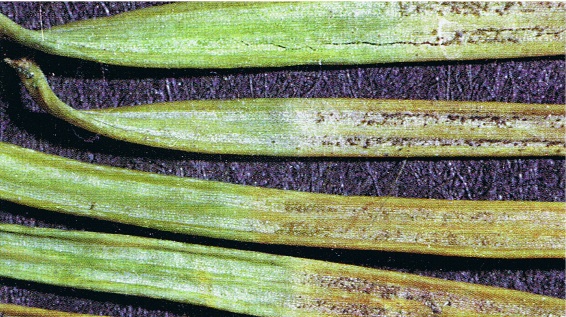
Fig. 5 - Fruiting bodies of Rhizosphaera kalkhoffii produced from stomata on damaged needles of Pseudotsuga menziesii.
Economic importance
Rhizosphaera kalkhoffii and R. pini are of little economic significance. They normally colonise only a few needles on otherwise healthy trees although there is one record of R. kalkhoffii as a possible needle-cast fungus on Picea abies. In 1971, trees at the edge of stands of Pseudotsuga menziesii throughout parts of Canterbury became extensively colonised by R. kalkhoffii, suggesting the outbreak of disease. However, needle damage was attributed primarily to windburn caused by a particular combination of warm, dry, north-westerly winds, and the problem has not recurred.
Rhizosphaera kalkhoffii is associated with needle-casting of spruces (Picea spp.) in Europe and North America, and pines (Pinus spp.) in Japan.
Control
Not considered necessary.
Bibliography
Birch, T.T.C. 1933: Gummosis diseases of Cupressus macrocarpa. New Zealand Journal of Forestry 3: 108-113.
Birch, T.T.C. 1935: A Phomopsis disease of conifers in New Zealand. New Zealand Forest Service Bulletin No. 7.
Birch, T.T.C. 1937: A synopsis of forest fungi of significance in New Zealand. New Zealand Journal of Forestry 4:109-125
Gilmour, J.W. 1966: The pathology of forest trees in New Zealand. The fungal, bacterial and algal pathogens. New Zealand Forest Service, Forest Research Institute Technical Paper No. 48.
Hood, I.A.; Sandberg, C.J. 1985: Some minor fungi of conifers (Phomopsis pseudotsugae, P. juniperovora, and Rhizosphaera kalkhoffii). New Zealand Forest Service, Forest Pathology in New Zealand No. 13.
Compiled: 1985; updated 2009
This information is intended for general interest only. It is not intended to be a substitute for specific specialist advice on any matter and should not be relied on for that purpose. Scion will not be liable for any direct, indirect, incidental, special, consequential or exemplary damages, loss of profits, or any other intangible losses that result from using the information provided on this site.
(Scion is the trading name of the New Zealand Forest Research Institute Limited.)

 Farm Forestry New Zealand
Farm Forestry New Zealand

